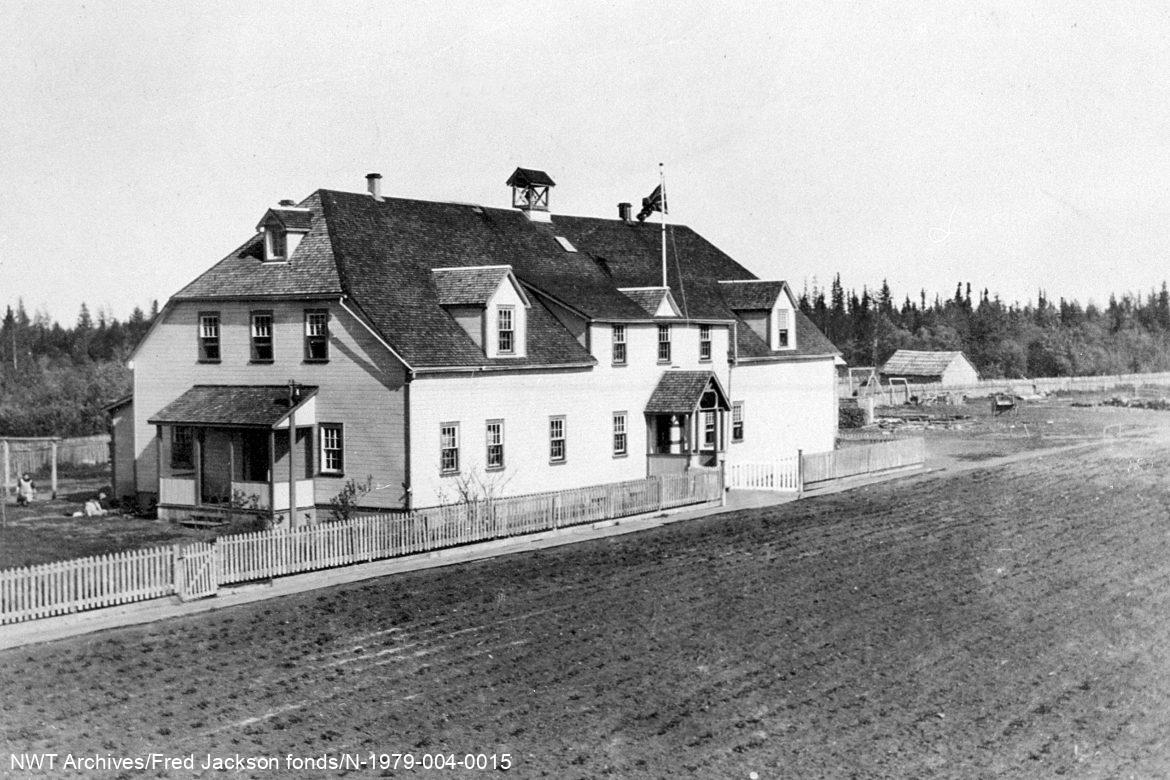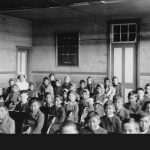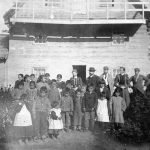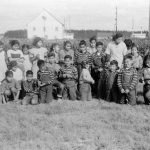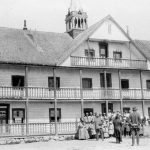1867
NWT Mission Schools
Euro-Canadian education was central to the ongoing contest between the Anglican and Catholic missionaries for Indigenous converts in the Northwest Territories. Church officials believed religious indoctrination was not as successful when children lived at home and went to school. The residential school mission system developed from the southern Canadian model and grew along the Mackenzie River valley, intending to assimilate Indigenous children into the dominant Canadian identity.
The Church of England’s (Anglican) Archdeacon James Hunter is believed to have taught the first formal classes in the Northwest Territories in 1859. In 1867, the first long-term missionary school in the Northwest Territories, Sacred Heart Residential School in Fort Providence, was started by the Grey Nuns (a Roman Catholic order). Mission schools usually opened on pre-existing church locations; the earliest schools did not always connect to residences. In 1874, the St. Peter’s School opened in Hay River, the first Anglican-run school with a residence added in 1895. In 1903, St. Joseph’s Roman Catholic Residential Mission School opened in Fort Resolution, following an Anglican church there from 1880 to 1895. Schools opened in Fort Smith in 1915 and Fort Simpson in 1918 and also existed in Aklavik (1919 and 1925/26) and Shingle Point (1929). The church-run period of residential schools in the NWT continued until the 1960s and had a lasting influence on education in the North.
Educational systems had significant social, cultural and political consequences for Indigenous people across Canada. The education programs in the NWT in those early years were a complicated patchwork guided by the religious institutions providing the education. Education services became elements of Treaty 8 and 11 negotiations, but the Canadian federal government could not enforce educational standards and left the curriculum choices to the organizing churches. More importantly, the Government of Canada was disinterested in funding education in the North despite treaty promises.
The lack of oversight allowed abuse and predatory behaviour to flourish. The fact that the Federal Government did not support the creation of schools in more communities meant that children had to travel and stay in residence. Forcing children to live in residence also accomplished the Federal Government’s goal “that the Indian children should be withdrawn as much as possible from the parental influence … where they will acquire the habits and modes of thought of white men.” – Prime Minister Sir John A. Macdonald, Official report of the debates of the House of Commons of the Dominion of Canada, 9 May 1883, 1107-1108.
